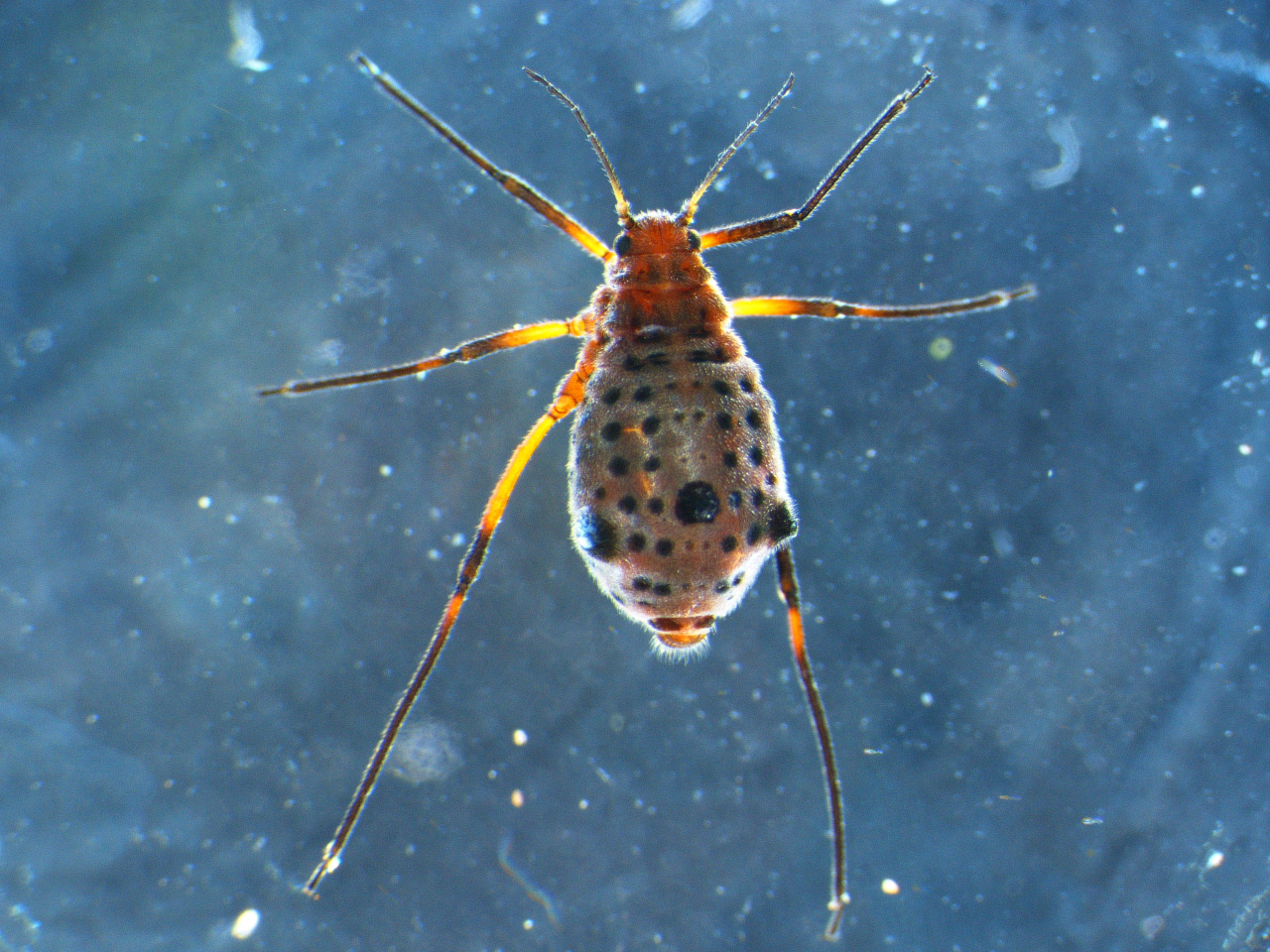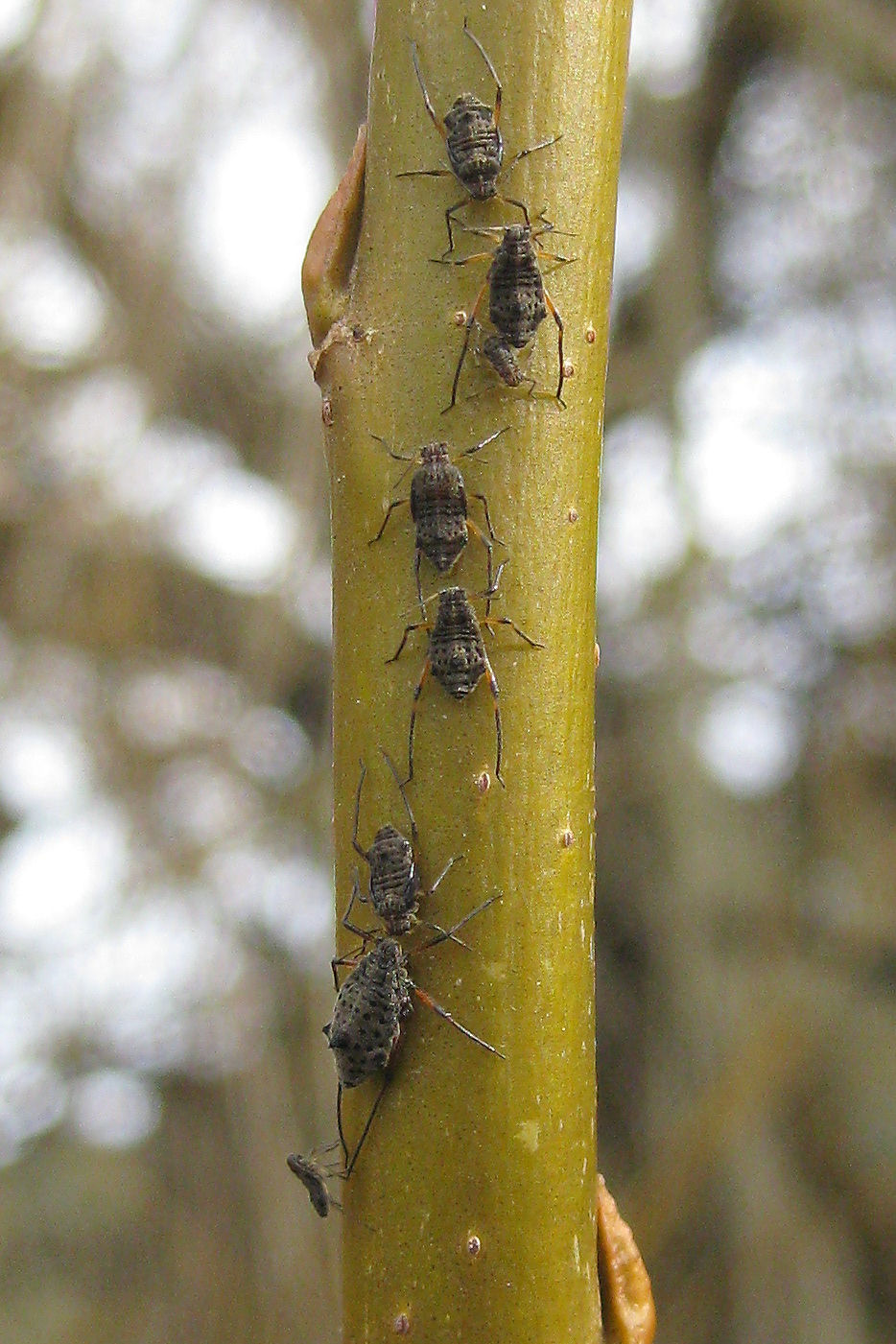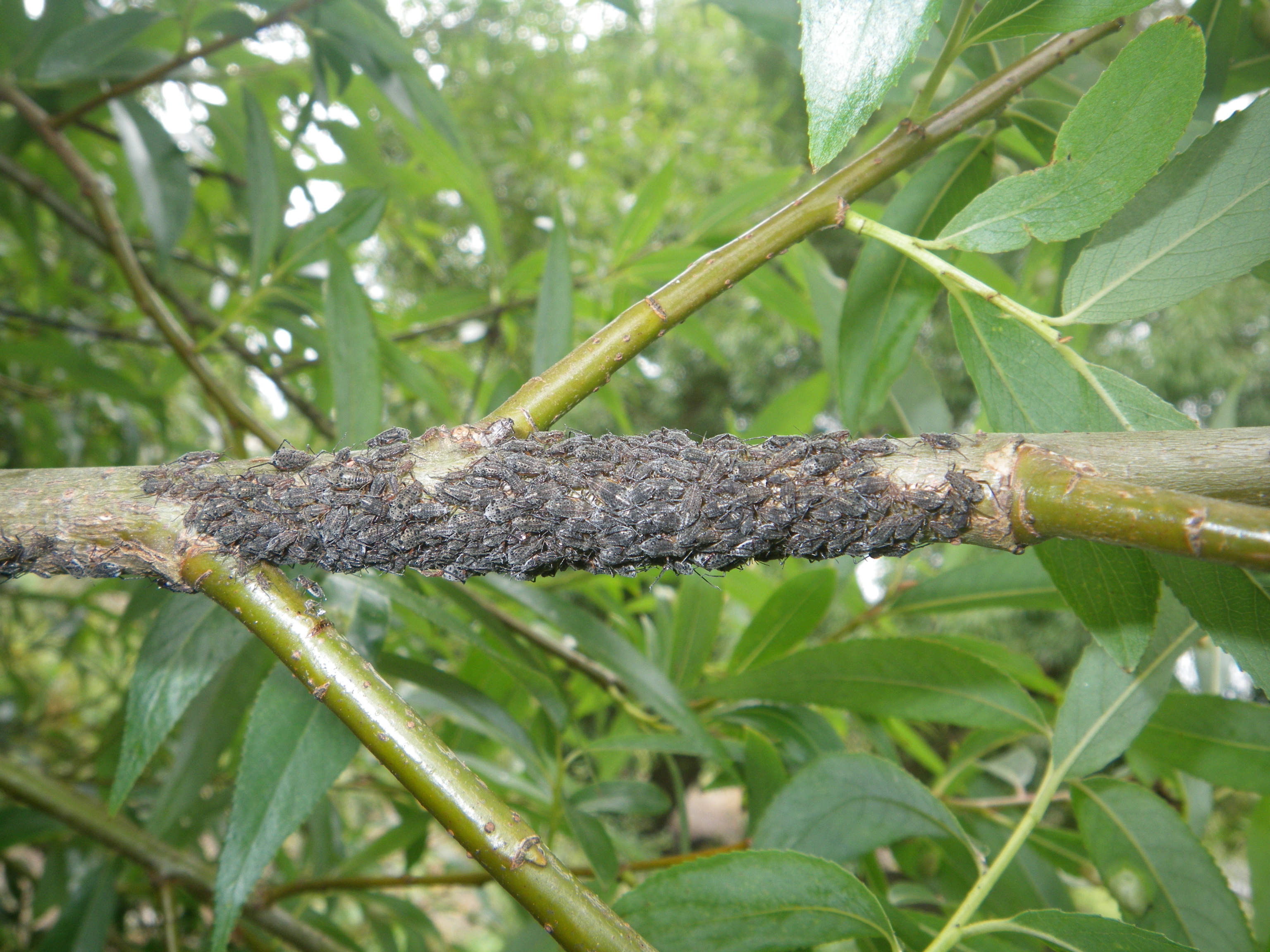Giant willow aphid
The giant willow aphid, Tuberolachnus salignus (GWA) predominantly feeds on willow trees and shrubs (Salix spp.) and is found world-wide in all areas where willows occur.
Description
GWA is a relatively large aphid (up to 6mm in body length), mid-brown to dark brown in colour with a distinctive pattern of dark spots and a three prominent 'shark-fin' like tubercles on their back. (Figure 1).
All adults are females and can produce offspring without mating. Winged forms (Figure 2) are produced in response to over-crowding to allow population re-distribution.


Feeding damage
GWA feeds on sap from the young stems and branches of its host trees (Figure 3), often forming dense colonies on host trees (Figure 4). The aphid has reportedly caused tree death in very old willow trees in India and in Europe GWA is considered a potential source of problem in short rotation willow production.
Large numbers of aphids feeding can cause shoot dehydration, delayed plant regrowth and decrease in the mass of woody tissue.
As a by-product of feeding, substantial amounts of honeydew are excreted. The sticky sugary substance attracts ants and wasps and can lead to the development of sooty mould.


Hosts
GWA feeds mainly on willow (Salix spp.) and has been reported on 50 species/hybrids of both woody and shrub forms. Presence of the aphid on poplars (Populus spp.) and the native New Zealand shrub, Coprosma macrocarpa, has also been noted.
Life cycle
All GWA are females and reproduce without mating, each giving birth to an average of 40-50 live young. The juveniles undergo four moulting stages before reaching adulthood which may take as little as 14 days.
Overseas experience has shown that colonies appear in summer, usually at the base of the willow trees, moving up the stems with increasing numbers. Colonies can contain many thousands of aphids. Colonies persist through the autumn, but they begin to decline in numbers during this time. Small numbers of aphids can still be found on leafless trees during winter.
Distribution
GWA is considered native to Asia but quickly became a cosmopolitan pest. It was detected in New Zealand in 2013 and in Tasmania, later that same year. Since then, it has been found in the Australian Capital Territory and New South Wales. It was detected in Victoria for the first time in 2014, in Wodonga and Melbourne indicating it may have been present for some time.
Spread
When hosts become over crowded, wingless GWA may leave the host tree and walk quickly along the ground, over rocks and man-made structures in search of new hosts.
Winged adults can fly and will disperse in search of a new host and less crowded conditions. Long distance dispersal by wind currents has been noted for other species of aphids. It is possible that GWA was blown into Australia from New Zealand.
Managing GWA
Management of GWA is the responsibility of the landowner.
In most situations, aphid control is not necessary. However for tree crops growers should monitor the presence of GWA colonies and consider controls if populations develop to high numbers and damage symptoms are observed.
In backyard situations, aphids can sometimes be managed by simply washing them off of plants with a forceful jet of water. Hosing plants can lethally injure aphids and very few surviving aphids that are knocked to the ground can successfully find their way back onto their host plant.
The introduction of predatory insects such as ladybird beetles, lacewings and spiders can help keep populations in check.
Photo credits
- Figure 1 & 3. Guy Westmore, Department of Primary Industries, Parks, Water & Environment, Tasmania.
- Figure 2. Influential Points.com, CC-BY-3.0
- Figure 4. Alan Flynn, Ministry for Primary Industries, New Zealand.
Reporting an unusual plant insect pest or disease
Report any unusual plant pest or disease immediately using our online reporting form or by calling the Exotic Plant Pest Hotline on 1800 084 881. Early reporting increases the chance of effective control and eradication.
Please take multiple good quality photos of the pests or damage to include in your report where possible, as this is essential for rapid pest and disease diagnosis and response.
Your report will be responded to by an experienced staff member, who may seek more information about the detection and explain next steps.
Report online